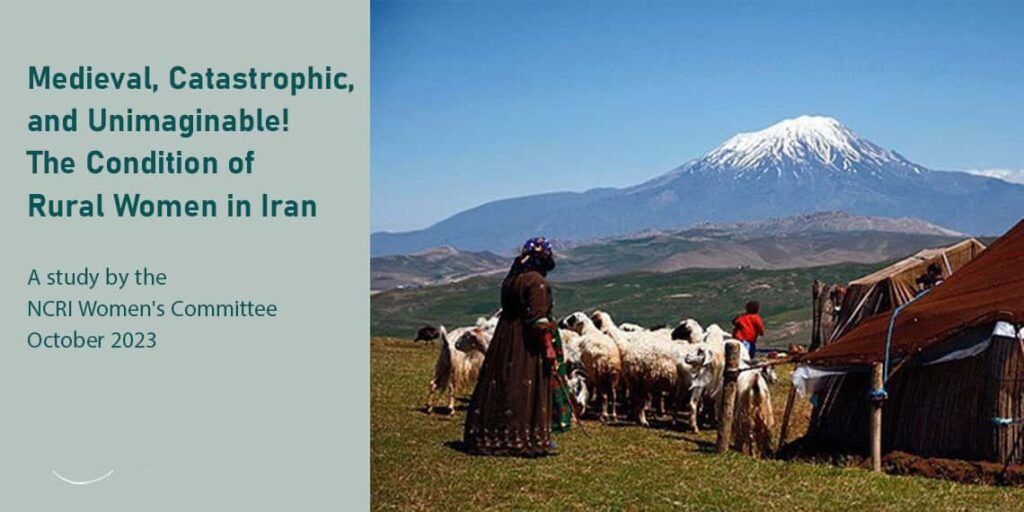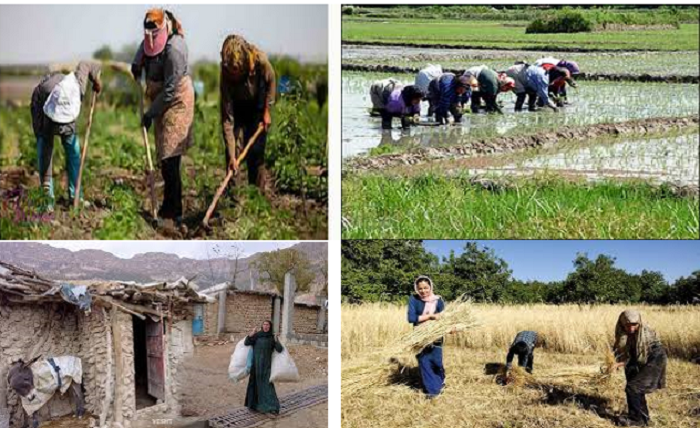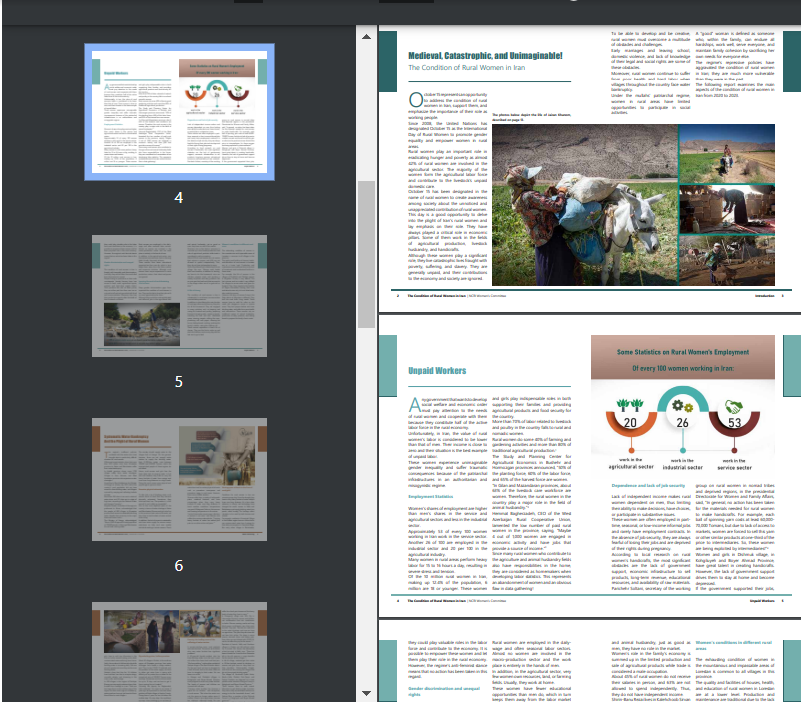
In a bid to promote gender equality and empower women in rural regions, the United Nations has designated October 15 as the International Day of Rural Women since 2008. Despite this, the substantial contributions of rural women, particularly in Iran, often go unnoticed.
Playing a pivotal role in eradicating hunger and poverty, almost 42% of rural women globally are intricately linked to agriculture. A significant portion of them, particularly in Iran, form the agricultural labor force, dedicating themselves to livestock care and agricultural tasks, frequently without any pay.
Iran’s rural women, while vital to the nation’s economy, face an overwhelming number of challenges. From early marriages and consequent early exits from education, to domestic abuse and a limited understanding of their rights, their daily lives are a testament to resilience. Exacerbated by Iran’s patriarchal regime, these women find themselves limited in their ability to participate in social engagements.

Key insights from a recent report that studied the condition of rural women in Iran from 2020 to 2023 reveal shocking disparities.
– Unpaid Labor: Rural women in Iran exemplify the grim reality of unpaid labor. The value attached to their work is consistently lower than that given to men, leading them into a cycle of poverty and unpaid domestic obligations.
– Employment Patterns: While women dominate the service and agricultural sectors with higher employment shares than men, their representation in the industrial sector remains low. Staggering work hours, reaching up to 16 hours a day, plague many of these women, bringing about immense physical and mental stress.
– Role in Agriculture and Livestock: Rural women in Iran are undeniably significant contributors to the nation’s agricultural and livestock sectors. They handle the majority of livestock and poultry-related labor and are central to traditional agricultural production.
– Flawed Data Representation: Despite their pivotal roles, many of these women are simply labeled as ‘homemakers’ in labor statistics, revealing a glaring oversight in data collection.
– Economic Dependence: With minimal or no income, rural women find themselves financially dependent on men. Their employment scenarios are often unstable and deprived of basic rights.

While the International Day of Rural Women aims to shine a light on these contributions, much remains to be done to truly empower and acknowledge the critical role of rural women, especially in Iran.
However, the challenges don’t end here. Local artisans, like the talented women of Dishmuk village, face the absence of government support and exploitation by intermediaries. The potential of these women to significantly influence the nation’s economy remains untapped due to the regime’s regressive views on women.

MEK Iran (follow us on Twitter and Facebook), Maryam Rajavi’s on her site, Twitter & Facebook, NCRI (Twitter & Facebook), and People’s Mojahedin Organization of Iran – MEK IRAN – YouTu
